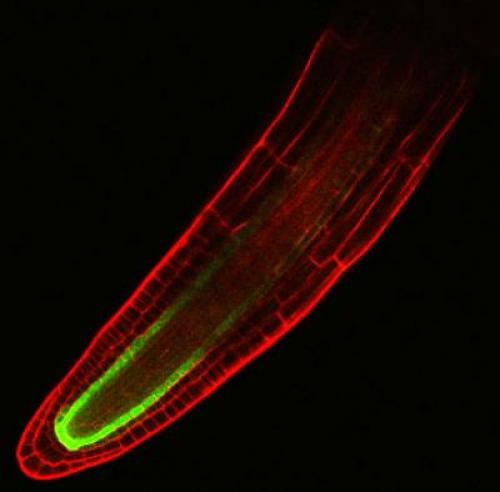Until now, it turns out, the mechanism by which the salt stops the development of the roots was not clear.

One of the biggest problems in agriculture is the fact that it is very difficult to grow plants in water with a high concentration of salts. Until now, it turns out, the mechanism by which the salt stops the development of the roots was not clear.
A team of researchers, led by Jose Dini and Lina Doan from the Carnegie Institution, discovered that not all types of plants are inhibited by salt to the same extent. They revealed in their studies the existence of an inner layer of cells in the roots of plants that is sensitive to salt and activates a stress hormone that stops the growth of the roots. The study, published in the latest issue of the journal The Plant Cell, outlines the explanation for understanding the stress response and developing salt-tolerant plants.
Salt accumulates in irrigated soils due to the evaporation of the water and the sedimentation of the salts that were in them. The UN estimates that salinity affects the crops in about 810 thousand square kilometers (or about 810 million dunams) of agricultural land and not only in developing countries, but also in countries like California. Dini explains: "Until now, an important part of the puzzle for understanding how plants deal with stress was missing, and that was the question of when and where stress affects growth."
The roots are closely connected to their environment and develop branched networks that allow them to explore the soil. The branching roots grow laterally from the main root and are important for collecting water and nutrients.
The researchers grew seeds of the laboratory plant Arabidopsis (in Hebrew) which is a relative of the mustard and used a dedicated imaging system that allows them to measure the dynamic processes of root growth during the response to salinity. This ability to follow the roots in real time allowed the researchers to observe the process of the roots entering dormancy when salt is added to them. To determine how this dormancy is controlled, Doan studied the role of various plant hormones in the process and found that abscisic acid was the main signaling molecule.
"We know the 'fight or flight' strategy that animals use when they face an external challenge, but plants cannot run to a safe place. It turned out that they could control the ability of their roots to spread into dangerous territory." Dini says. And adds that it seems that abscisic acid - a stress hormone produced by the plant when it is exposed to dryness or a salty environment, is important for controlling the plant equivalent of 'fight or flight'.
To understand how abscisic acid controls growth, the researchers developed a strategy to suppress the response to this hormone in different layers of the root tissues. They found that a significant part of the response to salt depended on a single layer of cells that sensed the hormone. The real-time imaging allowed them to observe what was happening to the growth of the roots in the mutant plant.
The "inner skin" of the root, known as the endoderm or in Hebrew the germ layer was the most important for this process. This tissue layer is particularly important because it acts as a semi-permeable boundary and allows certain elements to enter the root system from the soil. Duane explains.
"The research results show that in addition to acting as a filter for substances from the soil, the germ layer also acts as a gatekeeper, when the abscisic acid prevents the plant from growing roots in dangerous environments," says Dini.
Irrigation of agricultural land is a significant cause of soil salinization. As sea levels rise due to climate change, "understanding how plants, in particular grains, respond to salinity may allow us to develop a variety of plants that can grow in more saline soils in coastal areas." Legal summary.
to the notice of the researchers

3 תגובות
It is better to sow a snowy road with dirt from a coal station and not with salt
A method to combat soil salinity and reduce the SAR,
http://www.bayadaim.org.il/4pn
It is recommended to read from the section on 'Soil Enrichment'
200 million acres = about 800,000 square kilometers
Arabidopsis
Called in Hebrew Todernit (white)